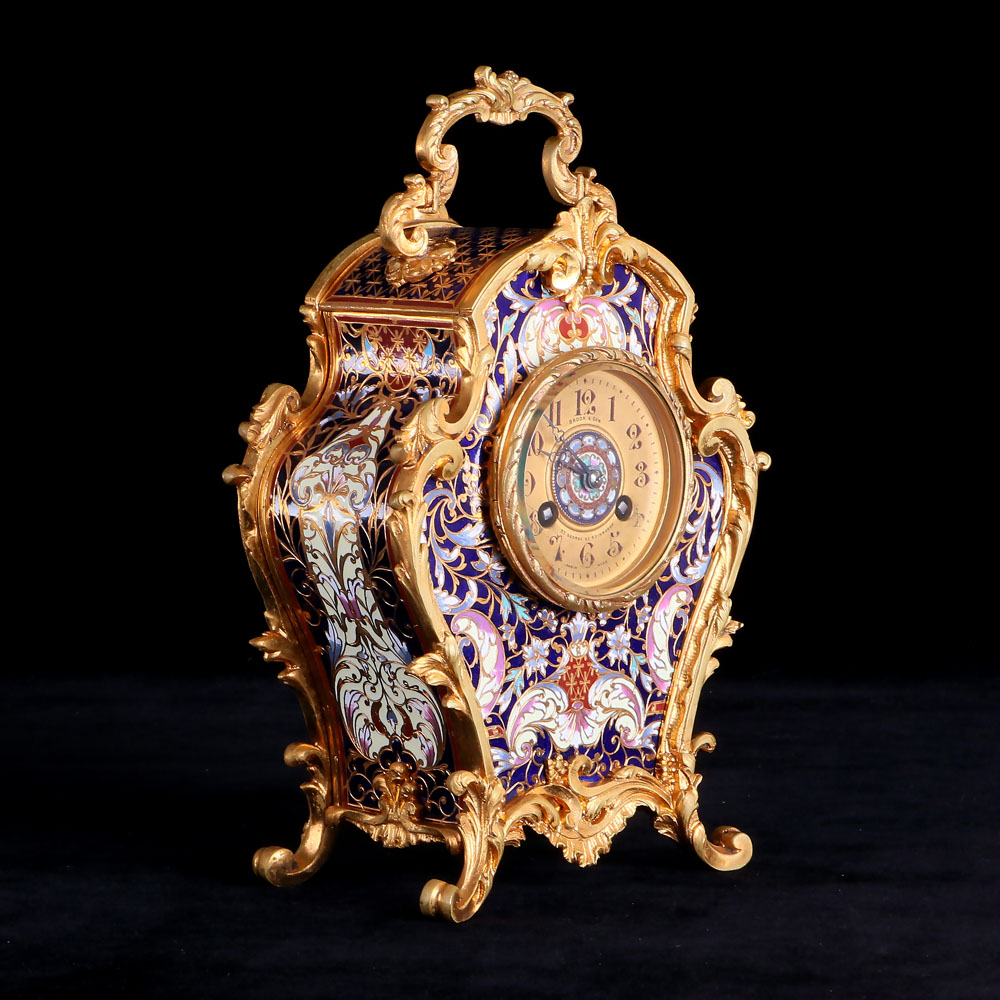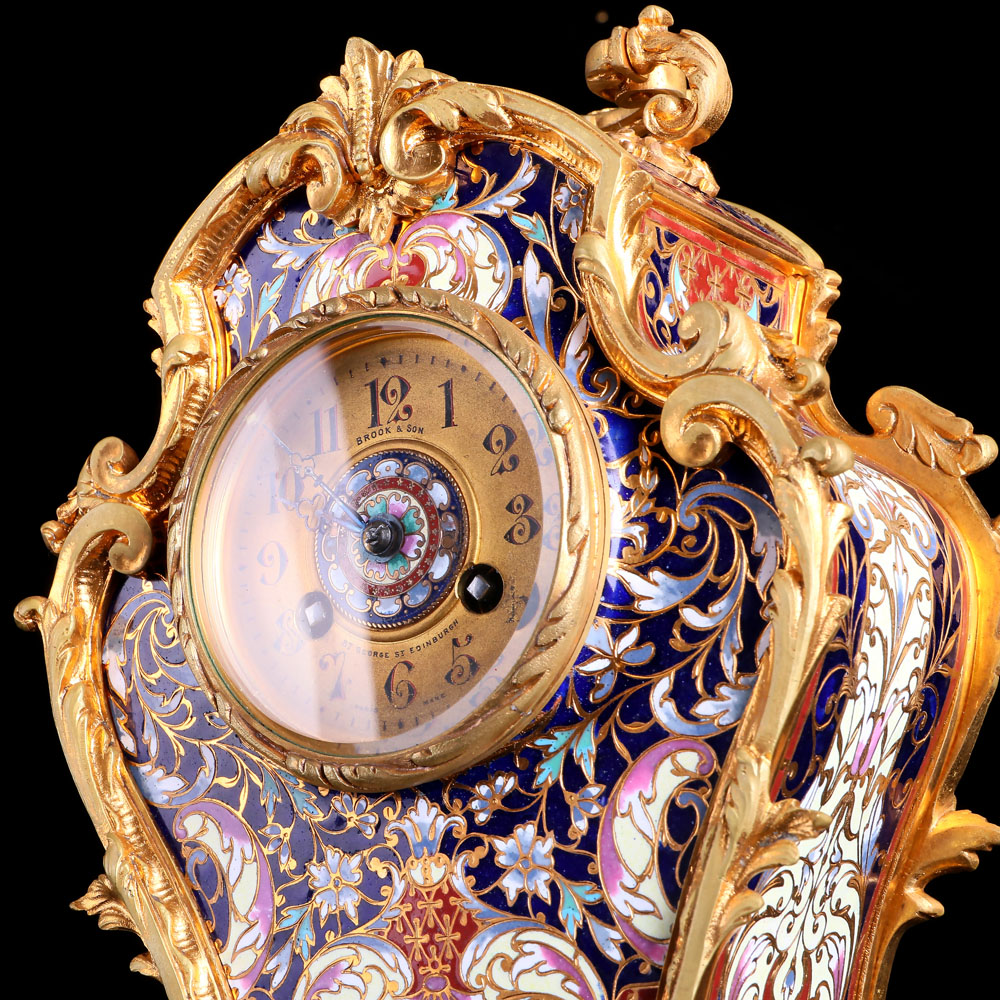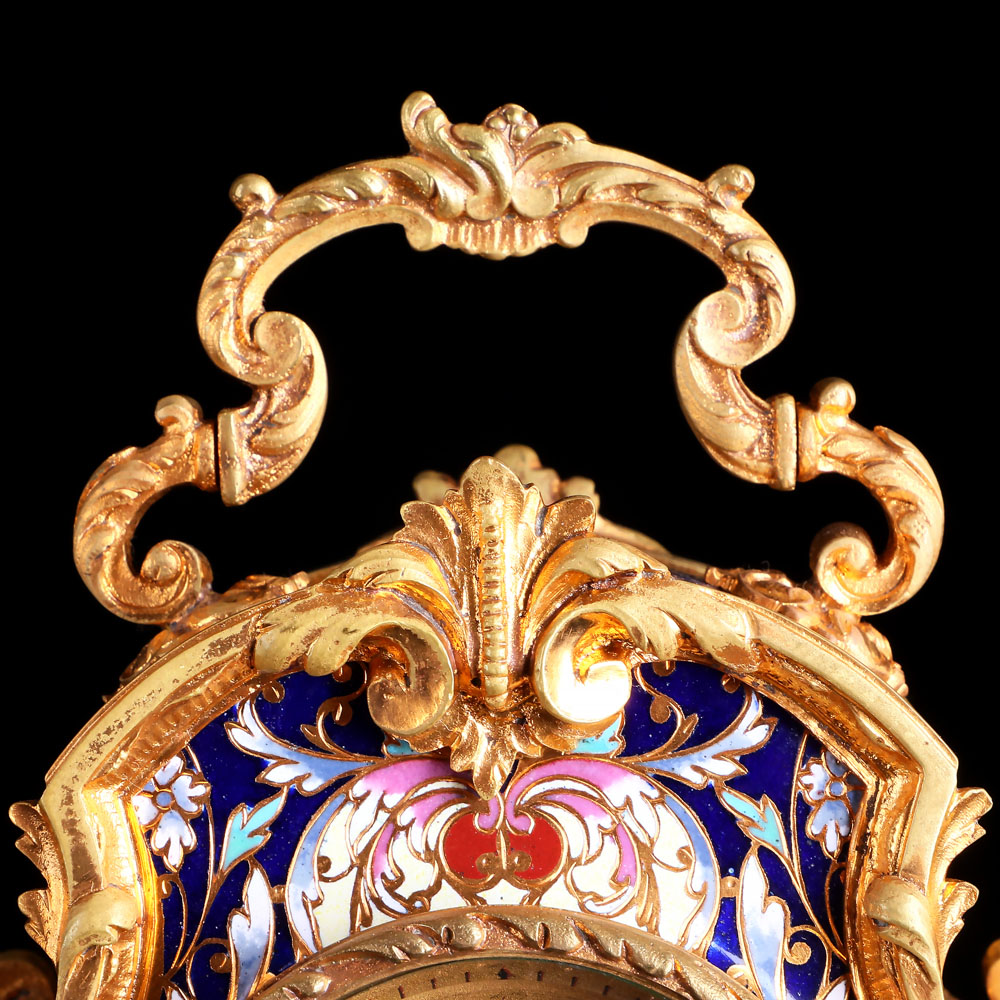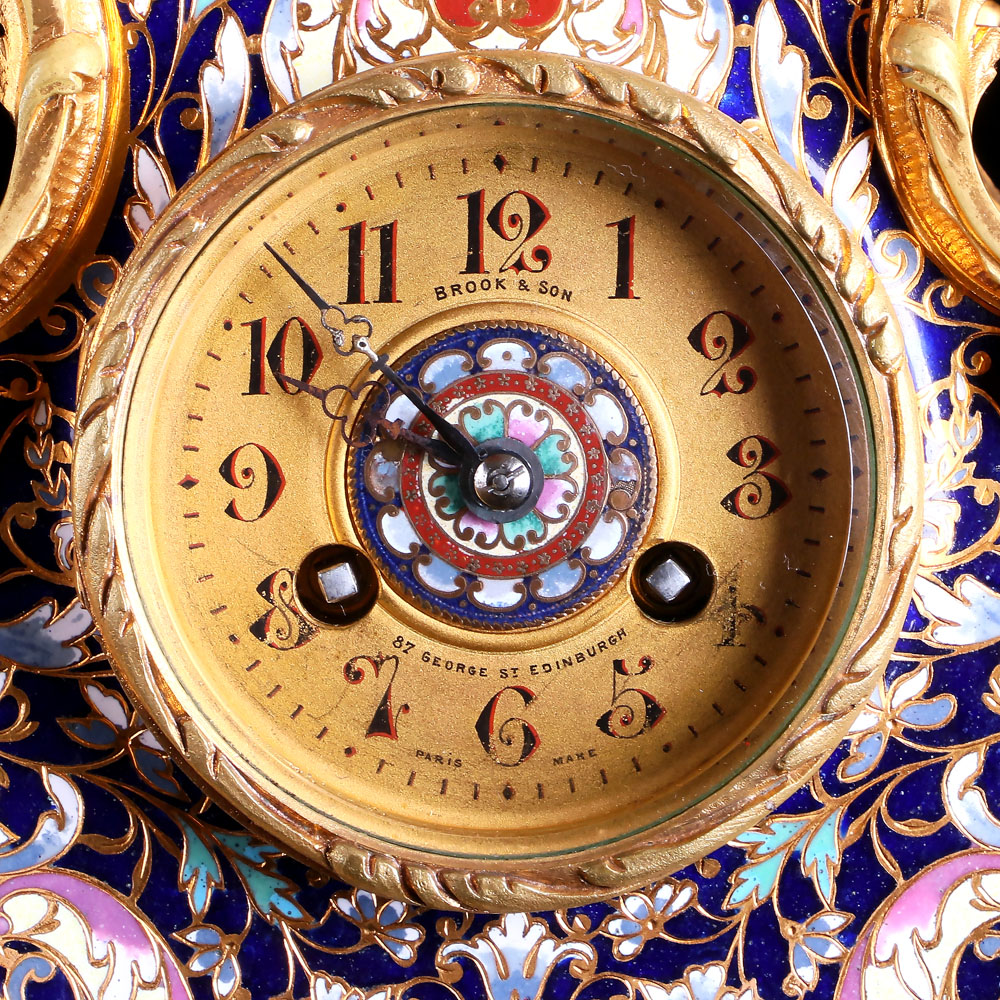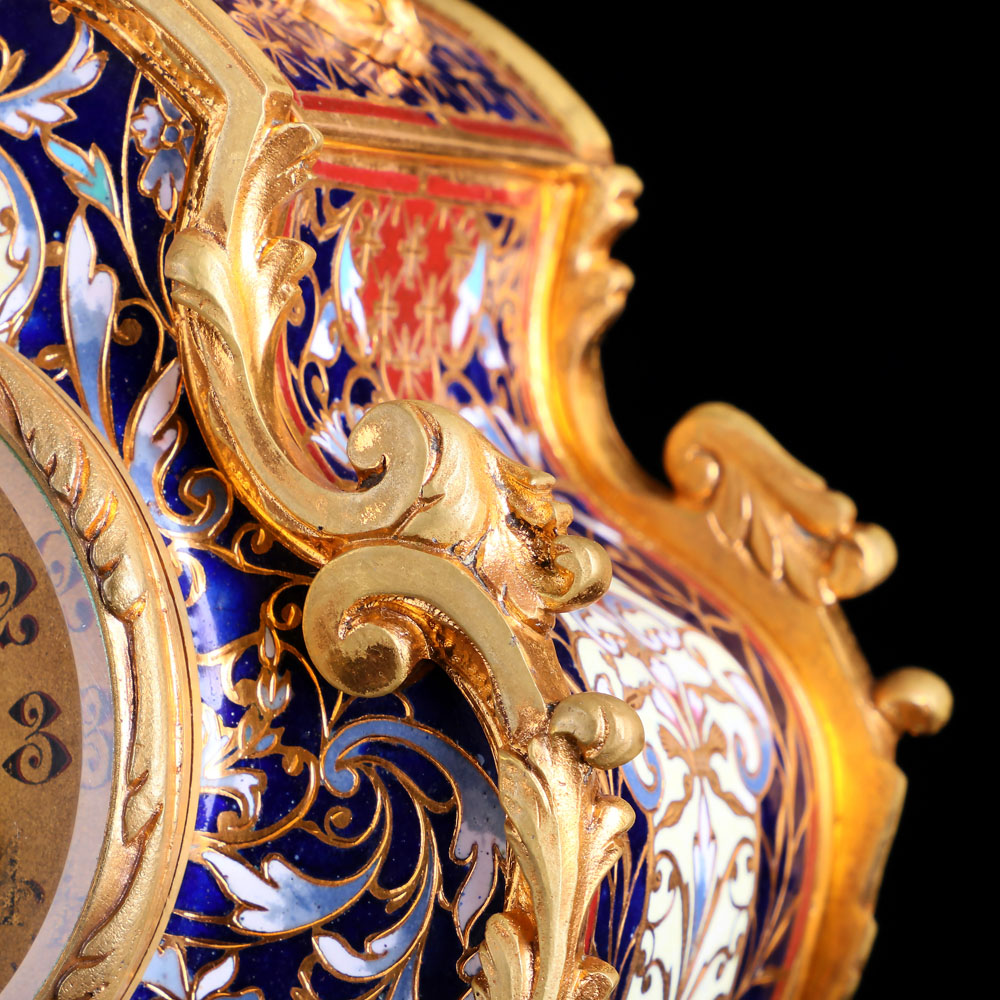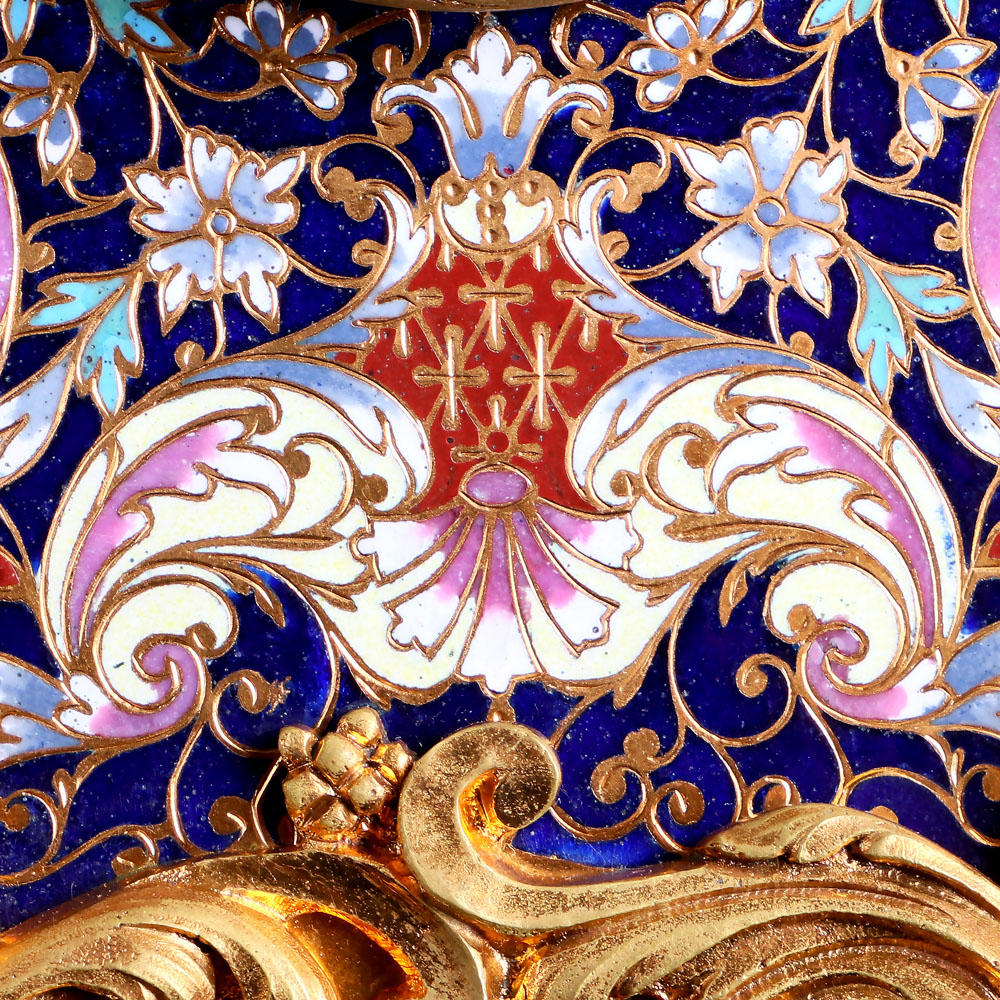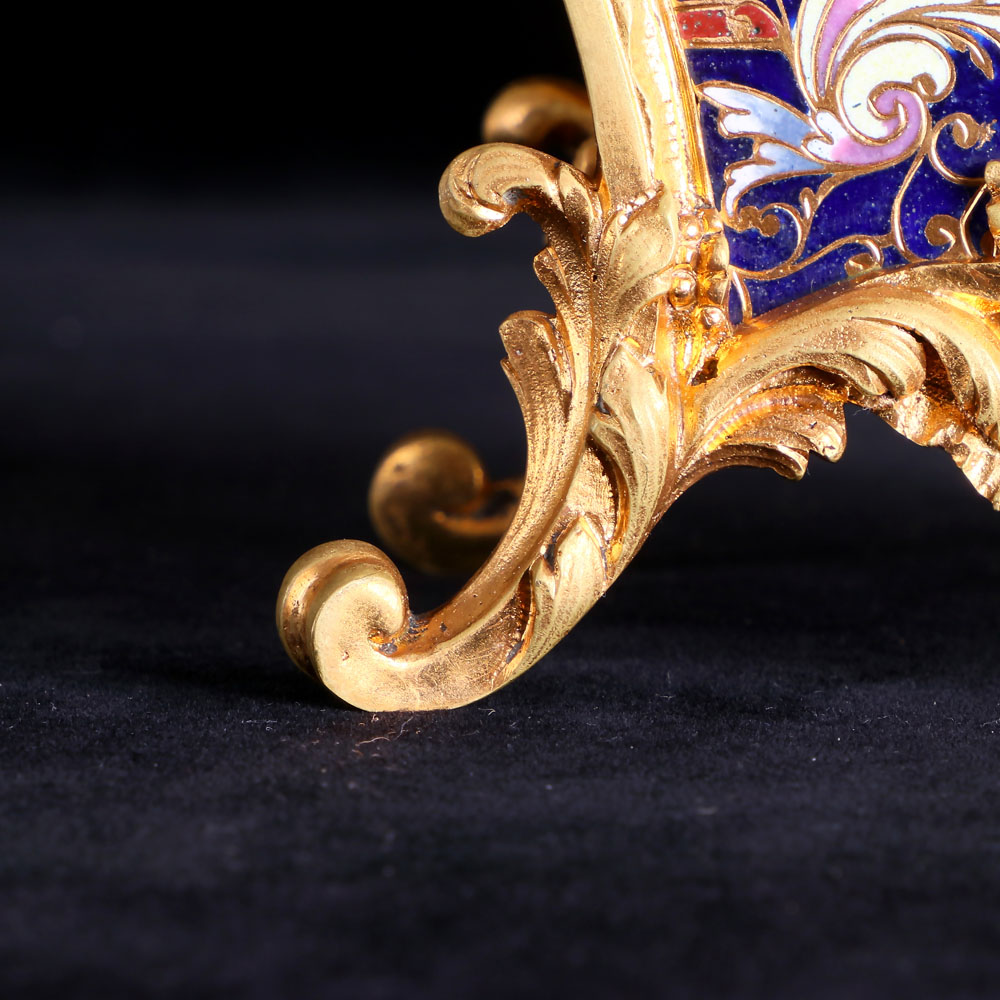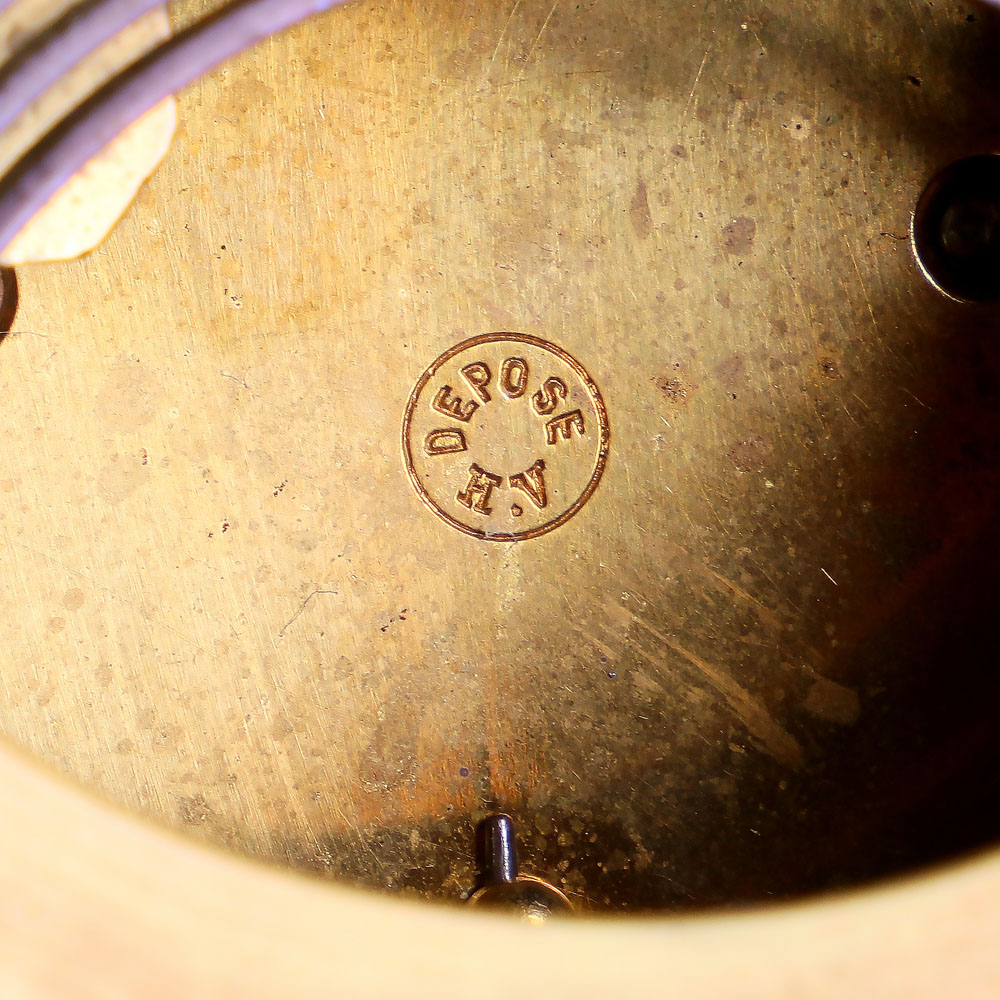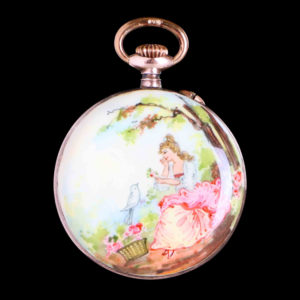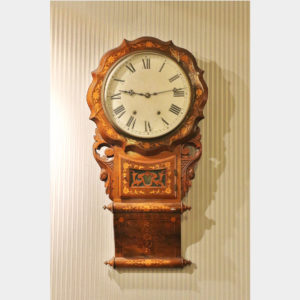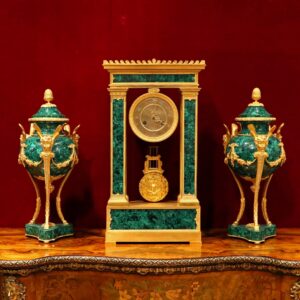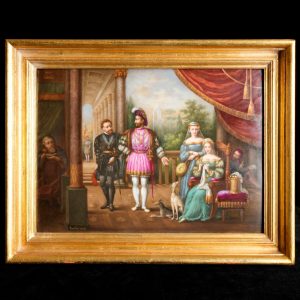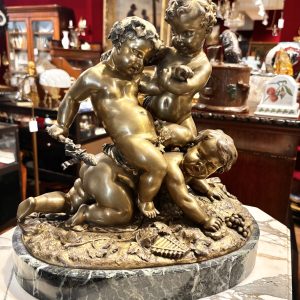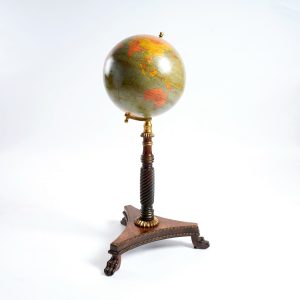描述
鎏金技術介紹:
鎏金Ormolu是法文,其作法簡單說明是把金子和水銀合成“金汞齊”﹐將“金汞齊”塗在要鎏金的物體表面﹐加溫至極熱的溫度後使水銀蒸發,只剩下K金留在銅表面而不脫落,其金色光澤性能夠永久維持。而因為汞加熱後揮發的氣體有毒性,所以使用汞來執行鎏金的技術,在1900-1910年左右,就被法國政府所明文禁止使用,所以之後鎏金座鐘數量驟減,只剩少數訂製品。至此之後任何一種技術,包括現今常見的電鍍技術,都沒有辦法超越銅鎏金所呈現出來的美感,因為電鍍的電鍍成色較為冷感,金屬質感較重; 電鍍金不是真金,是利用電解原理在物體表面鋪上類似金色的金屬,經過一段時間顏色會褪,不若鎏金的技術所呈現出來的K金質感,是色澤飽和的黃金色系,而且可以歷久彌新。
Description and Characteristics of Champlevé Enamelwork
Champlevé技法的特色與介紹
Like cloisonné enameling, champlevé is designed to add colour and glitter to metalwork, by creating small compartments, which are then filled with vitreous (glass-like) enamel or inlays of precious stones and heated to fusion-point in a kiln. Once the enamel or stone inlay has cooled, it is smoothed with pumice stone and polished. However, unlike cloisonné – which involves the creation of partitions above the surface of the metal object – the champlevé technique involves the creation of depressions or troughs below the surface -one reason why its name, which means; raised field; in French, is so confusing! The metal lines left untouched between the troughs serve as partitions. Because it is relatively easy to vary the width of the trough, the champlevé method provides for a greater variety of design than that achieved by cloisonné. Although seen in jewelry art made during Classical Antiquity, it was only during the era of Celtic art (from about 400 BCE onwards) that the technique became consistent and widespread. Indeed, Celtic metalwork art exerted a significant influence on Irish Monastic Art (500-1200) as well as early Christian art created in monasteries across England. (For more, please see also: Celtic Jewelry art.) However, the champlevé process is most associated with Romanesque art from the eleventh century onwards, when it was applied to reliquaries, caskets, plaques and vessels, as well as liturgical crosses and a variety of jewelry. It was also used in the making of illuminated manuscripts, to embellish bindings and covers. Later variants include the more translucent basse-taille technique. Famous items created using champlevé enameling include: the Stavelot Triptych (1158) and the Becket Casket (1180-1190).
Champlevé是一種被用於裝飾金屬器具的技法,與Cloisonné技法類似,兩者都是使用琺瑯顏料上色。該技法也被用於增強金屬表面的光澤,同時也可以用於鑲嵌寶石。在Champlevé的製程裡,工匠先將選用的琺瑯顏料及寶石以手繪的方式塗抹在金屬表面上,並加熱至熔點後,再使其冷卻,最後以浮石將其打磨直到表面光滑平順。與Cloisonné不同的是,Cloisonné技法的成品通常顏色分明,而且在每個顏色間有明顯的金屬分隔線。也就是說,金屬邊線是用於分隔不同顏色的琺瑯顏料,因此Cloisonné在表現上 顏色的對比較為Champlevé強烈。至於Champlevé技法的原理,則是在欲上色金屬表面上預先做出造型並且凹陷的模子,然後直接在其模子上色。所以在Champlevé技法中,琺瑯顏料在繪製途中有可能會產生漸層和混色的效果,因此Champlevé的表現較為多變化且生動自然。其實早在古希臘時期,使用琺瑯上色的技術就被使用於製作珠寶上,並在塞爾提克時期將其技術發展至成熟,而該技術也間接影響了後來的愛爾蘭馬賽克藝術以及基督藝術。在十一世紀,Champlevé技法常常被使用於羅曼式風格的藝術品,常見於 珠寶、收納箱、棺材、裝飾品、各式容器等等,也常見於宗教用品上。另外在部分珍貴手抄本的封面也使用琺瑯畫來作為裝飾。在之後則開始使用質地較為透明的琺瑯顏料來作畫,較有名的Champlevé例子包括:The Stavelot Triptych (1158) 和 TheBecket Casket (1180-1190) 。


